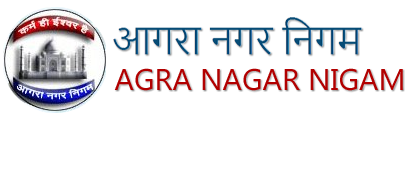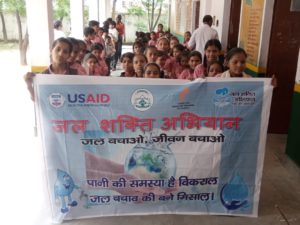Jal Shakti Abhiyan

Inspired by the Hon’ble Prime Minister’s impetus on Jal Sanchay, the Jal Shakti Abhiyan (JSA) is a time-bound, mission-mode water conservation campaign. The JSA will run in two Phases: Phase 1 from 1st July to 15th September 2019 for all States and Union Territories; and Phase 2 from 1st October to 30th November 2019 for States and UTs receiving the retreating monsoon (Andhra Pradesh, Karnataka, Puducherry and Tamil Nadu). During the campaign, officers, groundwater experts and scientists from the Government of India will work together with state and district officials in India’s most water-stressed districts* for water conservation and water resource management by focusing on accelerated implementation of five target intervention. The JSA aims at making water conservation a Jan Andolan through asset creation and extensive communication.
Agra, a heritage city, once flush with water is now under severe water constraint. It had the River Yamuna; 70622 wells, tanks, natural ponds and step wells. However, now not one of the well is functioning and River Yamuna is just another term for a drain. As per the groundwater report, Agra lies in the dark water zone of groundwater levels. The average depletion in groundwater level varies from 1.25-3.23 metre/year.
With its current depth lying at 83 meters, Agra has already depleted one of its two aquifers and will dry out the second aquifer if water is extracted at the same intensity and rate. The people of Agra depend on piped water supply, government provided on-site submersibles, tanks and bottled water to satisfy their water need. However, the quality of water has deteriorated over the years due to increased pollutants making the water saline and undrinkable. Furthermore, the inability of the government to meet sufficient water demand of the people of Agra is also contributing to high ground water extraction due to private bore wells. As per the report published by NITI Aayog, Agra is among the 21 cities to run out of Groundwater by 2020.
Agra Nagar Nigam wants to help revive the age old practices to help make Agra Water Resilient. To help restore the declining levels of groundwater and water quality in the long term, Agra Nagar Nigam with CURE has taken an initiative to create awareness and provide support on the impending water crisis in different communities and sectors through various participatory processes like wall paintings, rallies, group meetings, film shows and events. Rainwater is the purest form of fresh water and is available during monsoons and winter rains in the city. The effort is to harvest and recharge as much rainwater as possible in the city. Excess rainwater and overflows from leakages shall be recharged into the ground; the purpose being to restore the groundwater sources. In the end, it is expected that the rising ground water level shall revive the dried and drying wells in the city. There are several advantages of harvesting and recharging rainwater, such as-
• It improves health, reduces incidence of gastro intestinal problems, saves on health costs.
• Recharging of rainwater helps improve the groundwater tables and water quantity.
• Lowers household electricity bills by reducing need for pumping water
• Lessens use of cooking fuel as food cooks’ faster
• Reduces incidence of flooding by reducing surface runoffs and peak flows
In collaboration with Agra Nagar Nigam, CURE plans to conduct several IEC activities and campaigns to help sensitize the people on the impending water crisis. In the activity plan, we have proposed two activities per settlement in the two months(August-September,2019) with regular weekly follow ups, plantation and cleanliness drives with the support of Agra Nagar Nigam. The first activity conduction has been planned for 7 th August, 2019, followed by cleanliness drive conducted by ANN and plantation drive
respectively. To further understand the site, we have provided an approximation of the catchment area and the quantity of water that can be collected if harvested or recharged in the plan. Ponds, pokhars and wells are natural water reservoirs and are linked to underground water resources/rivers. They are formed in basins and troughs with slopes that allow water to drain into these. These must be protected from encroachment and made permeable to ensure that they can hold and recharge excess water during rains and floods. Currently the water demand of Agra is 394MLD whereas water supplied is 270MLD 1 . If we practice these techniques for water conservation, by collecting rainwater we can contribute to about 75% of the difference in supply to meet the needs of the people of Agra in a year.

